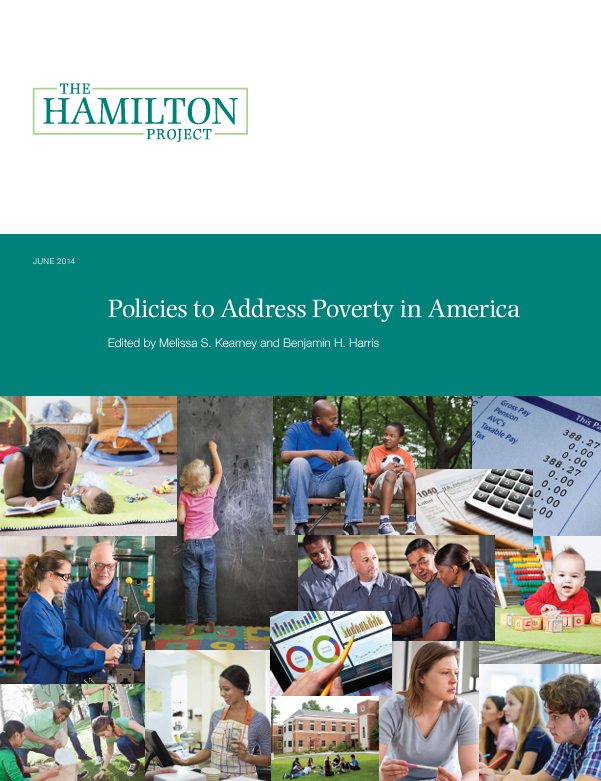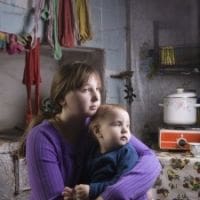The Hamilton Project asked academic experts to develop policy proposals confronting the various challenges of America’s poorest citizens, and to introduce innovative approaches to addressing poverty. The resulting 14 policy memos are included in Policies to Address Poverty in America.

Download the free eBook:
Amazon Kindle»
Barnes & Noble nook»
Google Play»
iTunes»
Kobo books»
Introduction
Why poverty belongs on the national policy agenda
Millions of people live in poverty in this country. They suffer not only material deprivation, but also the hardships and diminished life prospects that come with being poor. Childhood poverty often means growing up without the advantages of a stable home, high-quality schools, or consistent nutrition. Adults in poverty are often hampered by inadequate skills and education, leading to limited wages and job opportunities. And the high costs of housing, health care, and other necessities often mean that people must choose between basic needs, sometimes forgoing essentials like meals or medicine. While by some measures the poor suffer less material deprivation than their counterparts of a half century ago—almost all households now have access to basic necessities like electricity and running water, as well as consumer goods like televisions and computers—the social and economic costs of poverty remain as real as ever and threaten to undermine the nation’s social fabric and economic future.
Fifteen percent of Americans—30.4 million adults and 16.1 million children—lived in poverty in 2012, according to the official Census poverty count. This share rises to 16.0 percent when adjustments for costs and benefits are accounted for under the more comprehensive Supplemental Poverty Measure (SPM). Yet even these counts, as high as they are, understate our nation’s experience with poverty. For every person classified as poor, many more hover just above the threshold. As has been highlighted in earlier Hamilton Project work, 29.6 percent of families live within 150 percent of the poverty line; nearly half live within 250 percent of the threshold (Kearney et al. 2013). Many individuals and families weave in and out of poverty, even if they are not classified as poor under the annual income measure. From 2009 to 2011, about 90 million individuals—31.6 percent of Americans— were episodically poor (poor for two or more consecutive months during a thirty-six-month period) (Edwards 2014).
In the aftermath of the Great Recession, some disadvantaged workers struggle to obtain the necessary training for fruitful employment, while others grapple with long-term unemployment at unprecedented rates. Long-term challenges remain with us: too many of our nation’s youth drop out of high school, too many of our children are born into unstable home environments, and too many of our young adults are out of school and out of work. This threatens our nation with the prospect of a permanent class of individuals who are unable to contribute productively to and benefit from a thriving economy.
Furthermore, research demonstrates that poverty leads to substantial and sustained neurobiological stressors that can inhibit intellectual and emotional development and sound decision making. For children in particular, poverty means living with the stress that comes from insufficient nutritional intake, living in the presence of violence in their community or household, and not having a secure place to sleep at night. These challenges make it harder for children to learn and thrive in school, which, in turn, leads to problems that cumulate over childhood and into adulthood. The concern is that children born into deprivation will live their lives stuck in a perpetual poverty trap.
Improving the economic well-being of less-advantaged individuals has been a central focus of The Hamilton Project for many years, which has resulted in numerous discussion papers, including proposals to expand the wage subsidies for workers, reform and strengthen the food stamp program, provide tax relief for working families, reform unemployment insurance, expand access to higher education, as well as a proposal to develop a better measurement of poverty, among others. This volume builds on this focus and these existing proposals.
Poverty is a complex, multifaceted problem that can be overcome only through a comprehensive set of innovative policies and effective reforms. Tackling poverty requires a national commitment toward building human capital, harnessing the economic power of that investment, and providing a safety net when jobs are scarce or individuals are simply not intellectually or physically capable of economic self-sufficiency. It means a commitment to addressing the causes and consequences of poverty throughout the life course.
In recognition of these challenges, The Hamilton Project has commissioned 14 innovative, evidence-based antipoverty proposals. These proposals are authored by a diverse set of leading scholars, each tackling a specific aspect of the poverty crisis. The papers are organized into four broad categories: (1) promoting early childhood development, (2) supporting disadvantaged youth, (3) building skills, and (4) improving safety net and work support. The proposals put forward in this volume are forward-looking and, if implemented, would have important beneficial impacts on the future well-being of America’s next generation.




